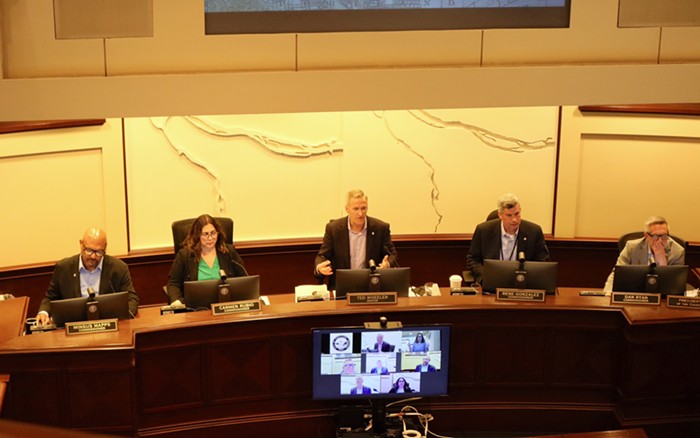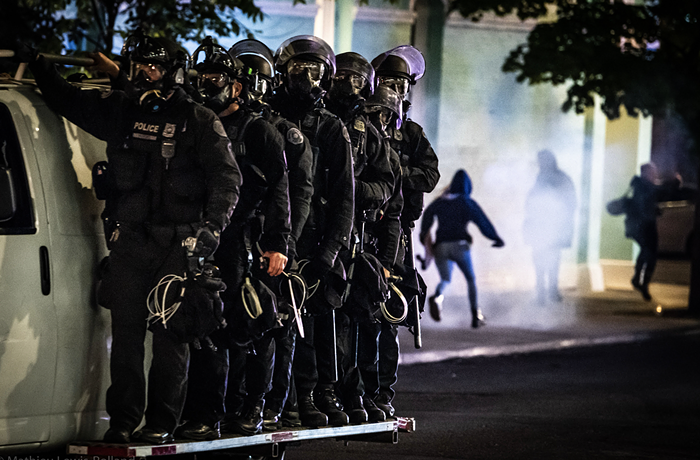In the wake of writing yet another earthquake story, I find myself once again more than a little annoyed by the surrender-to-the-fates, let-go-and-go-with-god attitude some readers seem to take toward preparing for the big earthquake expected to wreck the Northwest sometime in the next 50 to 100 years.
Here's my short answer to all this whiny nonsense: “Bitch, please. Grow the fuck up!”
My longer answer is hopefully more thoughtful.
Like the post’s title suggests, I’d like to share my flagrantly editorialized final thoughts before we’re all lulled into a false sense of security by the passage of time, and the general frenetic nature of our modern world, a world that has us constantly turning our heads this way and that as we try to take in the day’s barrage of distractions and novelties. And I'm pretty sure none of you will actually bother to take even basic steps toward preparing for a COMPLETELY PREDICTABLE AND LARGELY PREVENTABLE disaster. But as I hope my last story illustrated, the problem is only partially about what you as individuals do to prepare. It's way more about whether government officials and companies step up and start taking your well-being seriously. And let's face it, for that to happen, regular people like you will probably need to do the one thing that gets shit done in a democracy: get really loud and really angry and do it en masse.
When I write “preventable disaster,” I mean it. No, we can’t prevent our subduction zone from rupturing. But that’s not the point. The worst part about the earthquake won’t be the first four minutes of shaking it’s going to be everything that follows afterward.
As we’ve reported over and over again, if the 9.0 quake were to strike tomorrow, state emergency planners think it could take up to three months for electricity to return in the Willamette Valley, up to a year before the sewer and water pipes are reliably flowing again, and up to three years before our communications networks are functioning at something close to their pre-quake levels.
As many as 10,000 people could die, and Oregon’s economy is expected to bleed internally from a sucker-punch worth $30 billion. But you know all this. And hopefully you also know this scenario is—time willing—preventable.
Because when it finally strikes, the dark and ominous disaster looming on our horizon will be as much a human-made calamity as a natural one. And some people have been warning about this and trying to get those in power to respond, people like the smart folks at the Oregon Seismic Safety Policy Advisory Commission (OSSPAC)—the state group bringing all the quaking pieces together. (Yes, they need a shorter name.)
OSSPAC’s message is Oregon can recover in a matter of days and weeks instead of months and years. Unfortunately, they’ve got a lot of convincing to do, because right now the “gap” between OSSPAC’s ideal and our real world is pretty big.
Take telecommunications as an example. Under current conditions it could take Portland up to six months to replace underground cables, up to a year to replace equipment, and up to three years to replace buildings that house the high-tech stuff used to route calls. Make no mistake: The buildings really are the linchpin here, so we’re looking at up to three years before we’re at even a semblance of normal. That’s the real. OSSPAC’s ideal is to have telecom networks returned to 80 to 90 percent capacity by the end of two weeks. Think that sounds unrealistic? It isn’t.
OSSPAC members have based their pie-in-the-sky estimates on what Chile can already do—not always-prepared Japan, but Chile. If you need to have this put in perspective, Chile has a population of 17 million, compared to our population of 316 million. They have a GDP of $319 billion. We have a GDP of $15.65 trillion. As OSSPAC head Kent Yu told me recently, “If Chile can do it, we can, too.”
I want to believe him. Of course it’s very likely we won’t act in time. Nature has its own sense of chronology, and it doesn’t jive with the buzzing activity of human society. In fact, they’re pretty much opposites. Humans have a decided tendency to prefer the present over the future, the actual over the probable.
Psychologists call this “present bias,” and it occasionally gets us in trouble. And, many suspect, it’s also what’s keeping us from preparing for predictable and preventable disasters like climate change and the aftermath of our Cascadia subduction zone rupture. To paraphrase an emergency planner I spoke with, our nervous systems were designed to get through the day, not through an indefinitely long lifetime. We respond to lions and tigers jumping out from the shadows to attack us, but the beast that sneaks up on us over hundreds of years and lies in wait is also just as dangerous.
For those familiar with present bias, you’ve probably heard or read of an experiment that works something like this: A bunch of adults in lab coats separate a group of kids into a series a rooms. The mean adults then tell the kids they can either have one Oreo cookie (sometimes it's a marshmallow) now or, if they wait for 15 minutes they can have two cookies, “But if you eat the cookie now, you can’t have the other one later.” The sweets are placed right in front of the children.
The natural tendency is to go for the cookie that's right there, and as the experimenters watch from behind two-way mirrors the kids, nervous in their chairs, squirm with indecision. Some of the kids fold under the sugary pleasure and eat the sweets, but others don’t.
This is kind of Oregon’s situation right now. We’ve been given the choice between one cookie now, or two later. Only in our experiment, if we eat the cookie in front of us, not only won't there be more sweets later, but the scary doctors also will come in with hammers and break our kneecaps.
That might be slightly harsh, but really it’s not. We can choose to act and sacrifice now, or we can face the consequences.
But before you head for the hills and load up on dry goods, stop for a moment. Here's the thing:
What I hope my last piece of disaster porn illustrates is that it’s not just about how much freeze-dried ice cream you keep in your shed. It’s about whether government officials are up to the task. It’s about whether the state’s seismically vulnerable bridges will be replaced in time. And it’s about utilities being able to provide you with electricity, gas, water, and the ability to speak with loved ones and emergency responders in a timely fashion.
So stock up if you want to. But here again is my unsolicited advice: If you really want to prepare for the Big One, do what democracies do best: complain and complain loudly and do it in large numbers.
In other words, stop squirming in your chair and grow the fuck up.


















